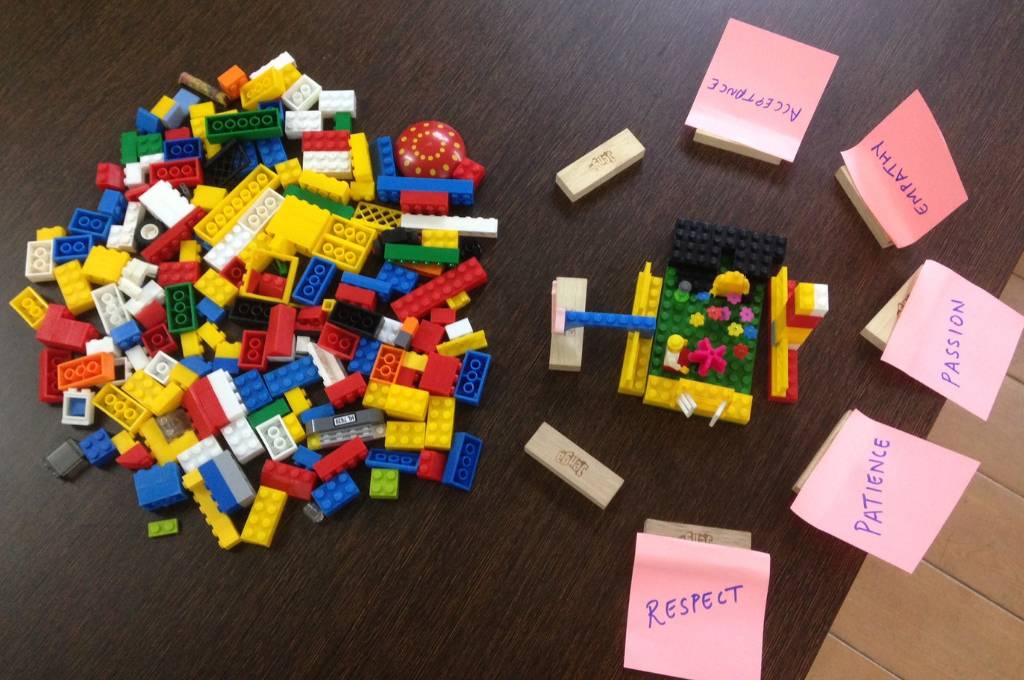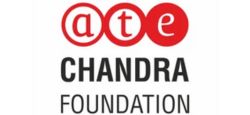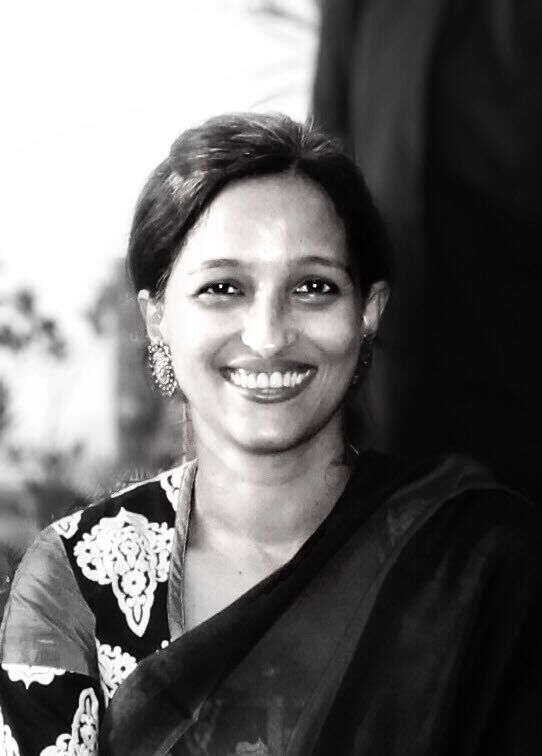What does it mean to build a strong team culture at a nonprofit organisation? How can you do so when you are strapped for budgets and resources? And why is it essential for you to invest in team members as your primary stakeholders? To unpack these questions and more, we take a look at Arpan’s journey with talent management—where they started, how they got to where they are today, and the reasons for their success.
Arpan is a nonprofit organisation based out of Mumbai that works on the prevention of child sexual abuse. When they started 15 years ago (in 2007), the team comprised three people. For the first six years (up until 2013), the team had 18 people and no firm HR processes or policies in place. Over the last 10 years, however, they have added another 120 members (bringing the team strength close to 140) and increased their budget 14-fold—from INR 1.2 crore in 2013 to approximately INR 16.5 crore in 2023.
At the heart of this growth is their intentional and continuous investment in people.

Pooja Taparia (Founder, CEO) says that some of the drive to think about HR came from the team itself. “We had started loosely thinking about HR in 2011 when the team began to grow. We sort of recognised the need to put some processes in place; the team was asking questions, but we didn’t have any answers. I don’t think we even had a proper appraisal system at that time.”
This is where Hemesh Sheth (Director, Support Operations) came in. He joined the organisation in 2013 and started looking at HR and finance seriously. Until then Pooja had mostly worked on these functions alone, sometimes with the help of consultants but never with a full-time dedicated team member. Having Hemesh join has allowed the team to grow, processes to become more structured, policies to become more robust, and ultimately impact to happen at a scale that would not have otherwise been possible. (In fact, Arpan has been awarded the Great Place to Work Certificate for five years in a row.)
Here’s how they did it.
Covering the basics and starting early
At a foundational level, Arpan made sure that they kept up with all the laws in the country. Pooja says that as the laws in the country changed, the organisation incorporated all of them. For instance, when the laws around pregnancy and parenthood were amended—with paid maternity leave increasing from three months to six months, and the introduction of paternity leave and miscarriage benefits law—Arpan included the changes in their HR policies. The organisation also has a POSH committee and child protection policy, which are both legally mandated and critical for a team doing the kind of work that Arpan is engaged in.
However, in addition to following the laws around HR, what sets Arpan apart is the discretionary benefits they provide their team members. All staff are given an annual training allowance so that they can upskill, and a therapeutic allowance, which permits them to invest in their own well-being. Both these provisions have been in place for over a decade now, much before it became standard practice at most other organisations.

Given the difficult nature of the work Arpan does, there are high chances of burnout—which is why they offer the therapeutic allowance.
Hemesh says that this focus on team well-being and skill building is a result of Pooja’s belief in the importance of mental health. “She keeps promoting counselling, even in our quarterly reviews. Now, on a quarterly basis, we have started tracking how many people are availing this allowance and how it is benefiting them, while respecting their privacy of course.” Arpan provides INR 1,500 per month as therapeutic allowance to every team member.
Pooja says that given the difficult nature of the work Arpan does, there are high chances of burnout—which is why they offer the therapeutic allowance. Despite this, not everybody takes it. People don’t understand the need for self-care. “I guess it’s a cultural thing, and especially because the majority of us at Arpan are women, we don’t take care of ourselves as individuals. It’s always the children, the family, everything else becomes more important, and then eventually burnout happens,” she says.

Building a second line of leaders and investing in a leadership pipeline
Unlike many other organisations, Arpan started building out a second line/director level early on in their journey. In 2014, the organisation brought on senior leaders to look at programmatic as well as support functions such as HR, finance, and monitoring and evaluation. The organogram changed as a result.
With a senior leadership team came in hierarchy. While for the first four years Arpan maintained a flat organisation structure, they soon had to think about who would report to whom and what was the best way to organise the team. And as the organisation has grown, the organogram has continued to change.
Having seven to eight people at the director level is critical to building resilience in an organisation.
“We’ve worked towards making the senior leadership stronger. Usually at a team size of 140 people, most nonprofits will have a maximum of two to three people [at the director/senior level]. We have seven to eight people at any point in time. This is critical if we are to build resilience in an organisation, so that if one person leaves there’s another who can take on the role in the interim and make sure that nothing drops. We also realised that when we have senior people focused on a specific vertical, the amount of time invested in it is far greater. This explains our exponential growth over the last decade,” says Pooja.
From 2009 to 2018, Arpan grew their personal safety education programme 20x to reach 40,000 children, parents, and teachers. The number of cases they dealt with increased by 30x, and they started providing training and capacity building for teachers and nonprofit professionals throughout India. From working with 1,000 people in 2015, they now train 35,000 people across the country.
Both Pooja and Hemesh say that Arpan’s ability to do many things simultaneously without diluting quality was possible because it had such a strong leadership team. Investing in team members with significant years of experience allowed them to monitor their work thoroughly, think critically, and invest in building the capacities of people who deliver on the ground. For example:
- Arpan’s content and curriculum now has a team of its own, which allows them to build the right, age- appropriate pedagogy for delivering personal safety education to children.
- Research, monitoring, and evaluation is a separate team as well. “We brought in a person at the director level about six years ago. And today, our research, monitoring, and evaluation team has 13 members. Earlier, this was a part of the programme team; we separated that out. Now, as a result, we have continuous evidence being generated to support programme strategy. This helps us make sure we’re on the right path in trying to solve the issue of child sexual abuse.”
- In addition, in 2019, Arpan brought on a fundraising director. Prior to this, Pooja was doing all the fundraising with support from Hemesh. But with the director on board, they have been able to focus on better donor management and getting new funders. As a result, their budget has doubled.
Pooja says that all of this has been possible because they have different people leading focused and diverse aspects. “Everyone is concentrating on just one or two things and not trying to do everything, because you just can’t do everything.”
Both Pooja and Hemesh talk about how important it is to make the right senior hires. “Cultural fit is important as we recruit across levels but it is even more critical when we are hiring senior people. In their case, the recruitment process is intense and takes time,” says Hemesh. The board is involved, the candidates have to take tests and interact with both the team and their future peers. “It’s a lengthy process, and sometimes we have gone wrong, but largely we’ve been fortunate with the senior people we’ve hired,” says Pooja. At Arpan, recruitment takes an average of two to three weeks for a junior team member and six to eight weeks for a senior team member.
Providing learning opportunities
Arpan has an annual training allowance (INR 5,000 for the first year of joining, and this amount increases every year) that encourages team members to continually invest in skill building. This can be used by individuals to upskill themselves in any area that is relevant to their role in the organisation.
In addition, Arpan creates several learning opportunities within the organisation. One of these is getting the team to do case study discussions. Pooja facilitates the HBR case studies from Dasra’s leadership programme (DSILP), using these to expose the team to a range of learnings and insights from other organisations on leadership, talent management, strategy, and more. “We really believe that we can’t do good work without building people’s capacities. Additionally, this will enable them to grow into the next leadership position that they are aspiring for,” says Pooja.
Senior leaders conduct capacity-building sessions for the entire organisation on diverse topics.
The organisation also provides coaching to managers and senior leaders. Pooja says it helps them handle the day-to-day issues around people, conflict, etc. Senior leaders in turn conduct capacity-building sessions for the entire organisation on topics as diverse as finance and advocacy with the government to fundraising and monitoring and evaluation. These are open to the whole organisation and aimed at helping them understand areas they don’t work on.
Lastly, Arpan uses a number of strategies to boost team morale. Some of these include an annual Appreciation Day (where team members acknowledge and appreciate one another’s contributions), rewarding good performance through awards, and reimbursing all team members (both in the field and in office) for expenses related to travelling to and from work.

Recognising that culture is critical
Arpan’s culture is built on team values. Hemesh and Pooja both highlight how important it is to be clear on your organisational values and to ensure that they are constantly reiterated. At Arpan, they organise a teamwide session on culture, values, and philosophy every year. This session is not just a PowerPoint presentation. “We divide people into groups and take on practical real-life challenges. And we use these to see what values people exhibit while working,” says Hemesh. In addition, the conversation around values gets reinforced at the time of induction when a new person joins, and then again during quarterly reviews.
“The real test for organisational values is whether you are demonstrating them in your day-to-day actions and decisions. Do they form the principal basis of your work? Constantly communicating this and reiterating it to the team is critical. That’s why an employee’s alignment to Arpan’s value culture is also incorporated in the organisation’s performance management metrics,” Hemesh adds.
Facing the challenges
Investing in people is not without its challenges. According to Pooja and Hemesh, the two biggest ones Arpan has faced, and continues to face, are managing individual growth and compensation.
1. Employee growth
A challenge that many organisations encounter as they grow is, what happens when people who were part of the initial team—the pillars of the organisation who carry the legacy—are unable to skill up as the organisation expands?
These are the employees who are dedicated, loyal, and very passionate about the cause and the organisation. However, as the organisation grows, while some manage to learn the new skills needed to grow in their careers and move up to become managers, there are several others who struggle, and a career path within the organisation becomes difficult to envision. This can be frustrating for both the employees and the leaders. “They want to move to the next level, but are not able to because whatever potential they have might be exhausted, or they are not willing to upgrade themselves. So you’re not able to give them the next jump in grade because they don’t have the skills to function there,” says Hemesh.
“We’ve tried giving people options. One is to work in different teams, so that there is a change in role—it helps break the monotony. Sometimes we realise that while a person might not be able to scale up to be a manager, they can contribute very well individually. So we carve out roles that allow them to do that. We try all these things because we really want to retain them since they are absolute assets. But we can’t always manage it,” says Pooja.
Hemesh says they also encourage these team members to use their annual training allowance to build skills. “It’s tricky. You don’t want to lose them but it’s also partly an individual’s responsibility to gear up for organisational growth and opportunities.”
2. Compensation
Benchmarking salaries in the sector is difficult. There are some compensation studies, but Pooja points out that it’s difficult to refer to them because salaries in the sector vary significantly based on the work organisations do, their location, team and budget size, and more.
“Finding a benchmark to see where you are on the compensation spectrum has been difficult. There are always some employees who are unhappy because they think other organisations are paying more. Arpan pays really well, and we’ve tried to be on the high end of the spectrum because our area of work is difficult, but this has been a constant challenge,” says Pooja.
Hemesh says that they try to benchmark themselves with organisations who work on child protection as they probably have a similar structure, despite the fact that most of these organisations aren’t as large as Arpan. “Because we can’t compare ourselves to funding organisations or CSR salaries,” he says. Despite this, Arpan has faced pushback on the need to have so many senior leaders, and ‘high’ salaries across the board. “They compare us to nonprofits doing other work and say our leadership salaries are very high. A CSR funder even used that as a reason not to fund us this year,” says Pooja.
Arpan’s advice to nonprofits
1. Recognise that people are your biggest assets
Pooja says that taking care of people in your organisation should be the number one priority. “When you take care of your team, the work that they go out and do is also better. This culture of care passes on to the people you serve. If you want to do quality work on the ground, make sure that your team feels respected and cared for.”
2. Invest in senior leadership
Getting the right people on board, even if they come at a higher cost, is absolutely critical. Pooja says that senior leadership salaries (for example, that of programme director) should be built into the programme budget. “Yes, it might rock the boat a little bit with different people being paid different amounts, but a market correction can be made for current employees in the next financial year to bring them up to par. Your programme expenses will increase but if you want impact, it has to be done. Skilled people with experience are necessary.”
Once these senior leaders are on board, the organisation has to invest time in integrating them with the rest of the team, supporting them to make decisions, and giving them what they need to carry out their roles successfully.
3. Create open communication channels, seek feedback, and act on it
Having feedback processes in place, hearing what employees have to say, and taking their inputs seriously is critical. “We are constantly asking our team what we can do better. If the intent of a nonprofit is to make it a great place to work and retain people, we need to make sure that the environment is such that people enjoy working in your organisation. Equally important is constant communication with the team, telling them that ‘these were suggestions you made and this is what we’ve put in place’. Arpan has done this in different ways.”
Just like the Great Place to Work initiative has an anonymous suggestion/feedback form, Pooja administers an anonymous feedback form separately at Arpan. Moreover, she does skip levels with the entire team once a year. “Last year our HR consultant also did a feedback process at the manager and director levels. So constant feedback mechanisms are introduced and we are continuously hearing from the team.”
4. Put HR processes and policies in place
In smaller organisations, things work even if there isn’t much structure to activities and work. But Pooja says that the minute you start growing and hit the 20-employee number, it’s important to put HR policies and communication processes in place.
“I feel the biggest angst employees can have is ‘this is not fair to me’. But when you have set processes and policies, the message that goes out is that ‘this is for everybody’. That clarity is really important. Whether it’s about induction, recruitment, or termination, whether it’s about leaves or compensation—everything must be documented in a structured HR document that everyone has access to, and it should be reviewed periodically and communicated.”
Arpan’s advice for donors
1. Look at the work, and not the salaries
Pooja says that funders must look at the work that an organisation is doing instead of nitpicking salaries, questioning why they have so many senior leaders, or why they need to spend on training and capacity building. “We’ve been lucky as we’ve not had many funders question our salaries. But I see it happening more and more, especially with CSR funders. I want to tell them, ‘Don’t question the salaries. Instead, look at the work that’s happening. And if you think there’s a mismatch, that the work is not good or impactful but the organisation is still paying well, then you have every reason to question. But otherwise please trust the organisation.’ Also, for an organisation to continue to do the good work they’ve been doing at a larger scale, the team’s skills and capabilities need to grow. So investing in building the capacity of the team is critical as well. Which means that donors must not second-guess their grantees’ costs on training and capacity building.”
2. Invest in long-term funding
Once donors have worked with a nonprofit and seen the impact of their work, they should actively consider long-term and core funding because it helps plan capacity and expenses better. This is especially important when an organisation is building a strong leadership team.
“If you want to get a senior person on board, one-year funding isn’t helpful. Funders must be willing to commit for three years. This allows us to hire leaders with experience who can take the organisation to the next level,” says Pooja.
—
About Pooja and Hemesh
Pooja Taparia is the founder and chief executive at Arpan, a nonprofit working towards the elimination of child sexual abuse in India. She is also on the board of Sol’s ARC, which addresses the challenges experienced by struggling learners and works towards improving their life outcomes.
Hemesh Sheth is a senior management professional with more than 25 years of experience in establishing strong sales and distribution networks, team management, business development, leadership, and building organisations. He has hands-on experience in business planning, operations, and team building. He has been associated with Arpan for more than a decade and leads the support operations team, which consists of finance, human resources, administration, and IT functions.
—
Know more
- Read this study to understand the challenges of talent management in the social sector.
- Read this article to learn how organisational culture affects talent retention.






